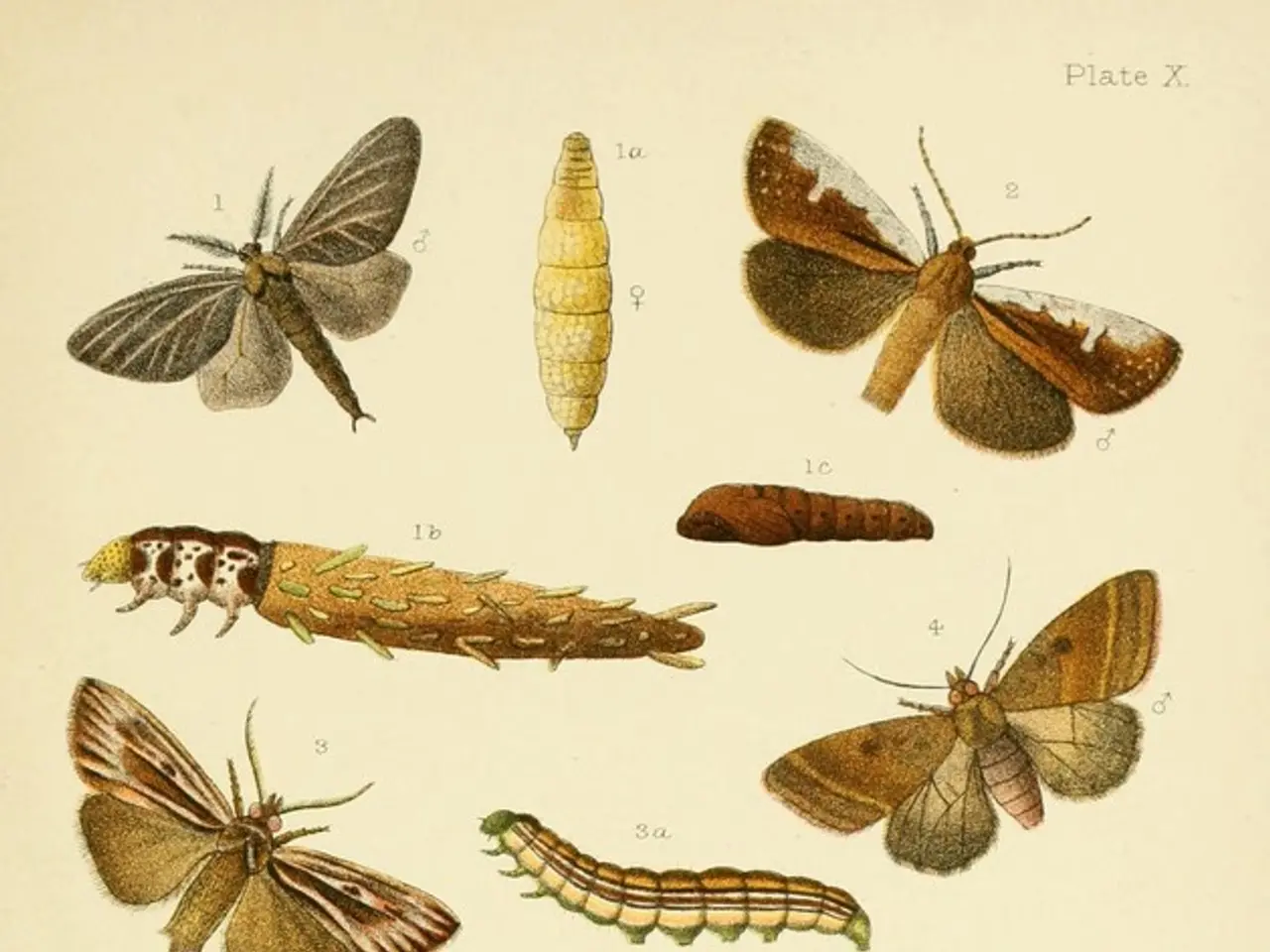Evolutionary Deception Unveiled: The Unusual Case of Butterflies Sporting a Second "Brain"
Butterfly Defenses Revealed: The Deceptive "False Head"
A new study published in Proceedings of the Royal Society B has shed light on an intriguing defense mechanism employed by butterflies - the deceptive "false head" on their hindwings. Researchers analysed nearly 950 butterfly species and found that these deceptive wing traits likely evolved as a group, drawing a predator's attention away from the butterfly's real head and towards its wings.
The false head of a butterfly is a combination of traits, including tails that resemble antennae, dark spots, conspicuous coloration, a false head contour, and convergent lines, creating an illusion of a second head at the rear of the butterfly. This deception could mean the difference between death and another day of mating and egg-laying for the butterfly.
The study found a likely progression in the evolution of false head traits in butterflies: false antennae came first, followed by spots, and then conspicuous coloration. Convergent lines, which resemble arrows pointing towards the false head, didn't evolve alongside the other traits and may serve a different purpose, such as camouflage or distraction.
The "false head" illusion works because predators, like birds, often aim to disable the head of their prey to kill or immobilize it quickly. When they are misled by the deceptive wing patterns and attack the hindwing instead, the butterfly often escapes with only minor damage to its wings rather than a fatal injury.
Some butterflies have deceptive markings on their hindwings, such as eye-like spots, thin tails that look like antennae, and wing shapes that mimic a second head. These features serve as a defense mechanism by diverting predators' attacks away from the butterfly's actual head and vital parts to the less critical hindwings.
Interestingly, these eye-like markings can also mimic the eyes of larger animals, which may intimidate or scare off potential predators by making the butterfly appear more formidable or less palatable. Some moths flash such eyespots suddenly when startled to startle predators and buy time to flee.
The study did not find a significant relationship between the number of false head traits and the size of the butterfly, indicating that both large and small species benefit from the strategy. The evolutionary models used in the study showed that once a butterfly gained a certain trait (like a false antenna), it wasn't easily lost, suggesting strong evolutionary pressure to maintain the illusion.
However, not all predators are equally fooled by the false head illusion. Some mantids, for example, don't seem to fall for the false antennae trick, suggesting that these adaptations might be fine-tuned for particular predator types. The authors of the study call for more work across predator types to understand the adaptive significance of false heads in butterfly defense mechanisms.
In conclusion, the deceptive hindwing markings work together as a multi-layered defense by (1) drawing attacks away from critical body parts by imitating a second head and (2) sometimes by frightening predators through large eye-like patterns, enhancing the butterfly's survival capabilities. This fascinating study provides new insights into the intricate world of butterfly defense mechanisms and the role of evolution in shaping clever ways for these delicate creatures to stay alive.
- The new research in Proceedings of the Royal Society B has delved into the evolution of a unique defense mechanism in butterflies known as the deceptive "false head," which has been linked to the development of advancements in genetics and evolutionary science.
- As technology advances, scientists in the field of health-and-wellness and fitness-and-exercise are interested in learning from the "false head" defense to design new techniques for camouflage and distraction in fitness wear, potentially enhancing the safety of outdoor enthusiasts.
- Given the significance of the evolution of the "false head" in butterflies, researchers are keen to explore its implications in environmental-science, especially in relation to the impact of pollution or climate change on butterfly populations and their adaptability.
- The findings from this study could also stimulate engagement in the public discussion of science and its impact on our understanding of the world, advocating for the importance of science in shaping our health, wellness, and environment.
- As we look toward the future, this research serves as a reminder of the endless possibilities in the realm of science and its capacity to reveal intriguing discoveries that challenge our existing knowledge and inspire the development of innovative solutions for various fields.




